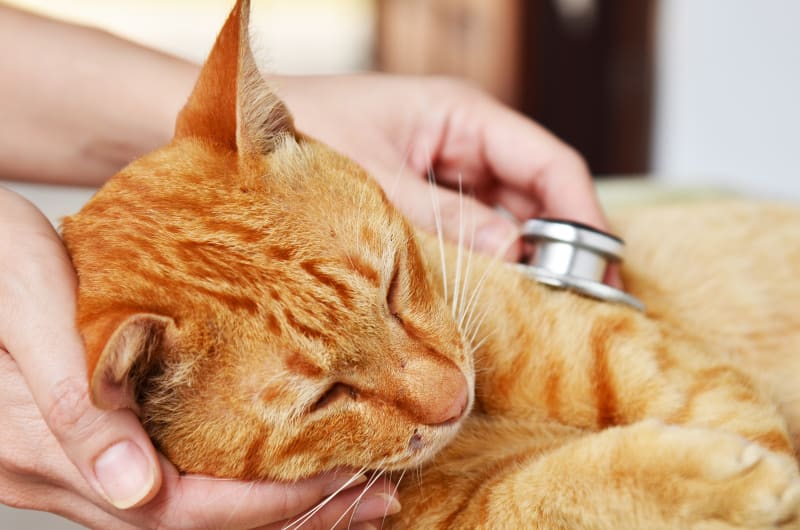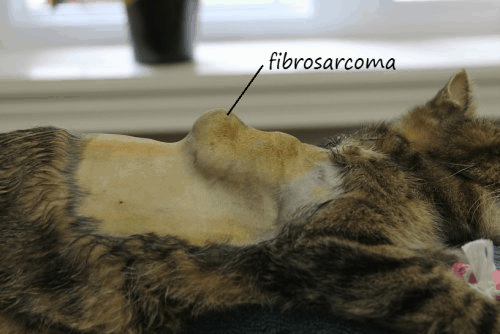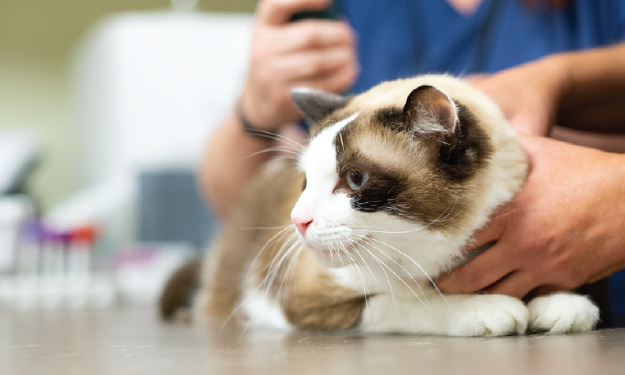sarcoma in cats prognosis
Vomiting and diarrhea are common signs of gastrointestinal lymphoma. If the bone cancer is in the mouth the cat may not wish to eat at all.

Feline Injection Site Sarcomas The Veterinary Nurse
Treatment Options For Osteosarcoma in Cats.
. The clinical signs of feline mast cell tumors depend on the location of the tumor. Weight loss is a common sign. Injection-site sarcomas in cats are very difficult to treat.
Cats with this cancer can live on average anywhere from 1 year to 4 years depending on the location severity and how early treatment was started. With a low grade tumor the situation is less serious because the aggressiveness is not as strong as a tumor that is categorized as high grade. Symptoms of Feline Soft-Tissue Sarcomas.
Life Expectancy How long can cats live with bone cancer. Most soft tissue sarcomas are heterogenous and are solitary tumors that have no breed or sex predilection. A veterinary pathologist can give the vet and cat owner a prognosis which gives the cat owner a probability of recurrence of the cancer or a metastasis of the cancer to other parts of the cats body.
Add your Vet and Pet Rx info then Chewy Handles the Rest. This is a cancerous growth presenting as a mass on the body or leg of a cat. Treatment combining surgery chemotherapy and radiation therapy significantly increases the tumor free time to 18-24 months.
Local recurrence is often the cause of a poor outcome with metastatic disease apparently rare. Signs of a soft tissue sarcoma affecting the reproductive system. In the early 1990s however the occurrence of sarcomas at sites commonly used for vaccination such as the shoulder lumbar region lower back flank side of the body and upper hind leg has led researchers to find out if there was a direct association with vaccination.
The rate of surviving depends on the grade of the feline tumor. Sarcomas affecting various body tissues have always been seen in cats. Cats with fibrosarcoma or nerve sheath tumor had significantly longer survival times when compared with cats with malignant fibrous histiocytomas.
Thankfully in most cases cats who have been diagnosed with fibrosarcoma have a positive outlook. What is the prognosis. This is the first study applying a histological grading system to these common tumours.
Ad Get NHVs Cancer Fighter Pack for your cat and help support the immune system naturally. Affected cats may become dull inappetant and slow to move around. Another treatment option is chemotherapy.
Externally we can see lumps and bumps. In terms of appearance soft tissue sarcomas often present as. Soft tissue sarcomas account for approximately 7 of skin and subcutaneous tumors in cats.
In one study the age range of affected cats was 8 to 105 years of age. Cats are tricky because they hide disease well. It is usually chosen to treat tumors with a higher likelihood of metastasis but can also be used as an effective method to target cancer cells in cats with vaccine-associated sarcomas.
Each cat is different and some will survive longer than others. Often the lameness is severe with the cat refusing to place the affected limb on the ground. The symptoms of a soft-tissue sarcoma depend on its location on a cat.
The clinical course of the disease process tends to be slower in cats than in dogs. At home pet owners need to keep the cat from scratching biting licking or rubbing the. A mass that you can feel.
Depending on the severity of the tumor for example if the tumor has spread to other areas or if it can be completely removed cats can live up to 3 years after a diagnosis. Typically they are shiny pink hairless nodules on the skin but there are many variations on this. In other words the lower the grade of sarcoma the better.
It is important to note. Ad We Offer the Same Medications As Your Vet at Great Prices. Bone Cancer in Cats.
The prognosis for cats with fibrosarcoma varies based on the stage and spread of the mass. Typically fibrosarcomas are difficult to treat and a cure is unlikely. Prognostic factors and proposed grading system for cutaneous and subcutaneous soft tissue sarcomas in cats based on a retrospective study.
The following are just four types of sarcomas in cats. If the cat dies from fibrosarcoma it is likely because of the recurrence of primary site tumors. They often occur in middle-to older-aged animals which is consistent with the signalment of this case.
Vet formulated to support your pets complete body in the fight against cancer. Osteosarcomas in cats are much less common than in dogs but account for approximately 70 of the malignant bone tumors in cats. What are some of the symptoms of feline cancers.
Hemangiosarcoma HSA is a cancer that arises from malignant blood vessel cells and is an uncommon cancer in cats. The location and extent of the tumor will determine the prognosis but the average time of survival after surgery is often less than one year. Like all cancer treatments the earlier a tumor is detected and treated the longer your cat is likely to survive.
They can be wide plaques or lumps. Cats with tumors on the legs where an amputation can be performed appear to do better than cats with tumor on the trunk of the body. Reported median survival times were 640 days versus 645 days versus 290 days respectively.
Following removal of fibrosarcomas from the pinna or flank in 6 cats none died as a result of the tumor but 24 of 35 70 cats with fibrosarcoma in the skin of the head back or limbs were euthanatized because of local recurrence usually within 9 months of surgery. Cutaneous mast cell tumors present as lumps swellings or lesions in the skin or under the skin usually around the head and neck but sometimes elsewhere. The median survival time of cats with a tumor of mitotic index 6 or more in the head back or limbs was 16 weeks.
Chemotherapy consists of four to six treatments given at three-week intervals. Pets with soft tissue sarcomas in the mouth often have bad breath halitosis difficulty eating loss of appetite bleeding in the mouth or obvious tumors in the mouth. Pets with intestinal tumors may have signs of an intestinal blockage such as vomiting diarrhea lack of appetite weight loss and abdominal pain.
However the predominant symptoms are. Moreover complete and permanent remission is rare. Chewy Pharmacy is that Simple.
A tumor that develops at the site of a vaccine injection such as for rabies or. The diagnosis was osteosarcoma. Lachowicz explains that soft-tissue sarcomas may be less aggressive with progression occurring over weeks to.
Diagnosis Of Bone Cancer In Cats. Difficulty in breathing can be a sign because some cancers can cause fluid in the lungs. This is a difficult question to answer because each case is different.
It is a very aggressive cancer that spreads metastasis early and is associated with a poor prognosis. Life Expectancy of Fibrosarcoma in Cats.

Pdf Treatment Of Two Cats With Advanced Nasal Lymphoma With Orthovoltage Radiation Therapy And Systemic Chemotherapy Semantic Scholar

Fibrosarcoma In Cats Causes Symptoms And Treatment

Cat Injection Site Sarcoma The Risks Treatment Prognosis Of This Deadly Tumor Our Pet S Health

Tumors Of The Skin In Cats Cat Owners Merck Veterinary Manual

Injection Site Sarcomas In Cats Good Pet Parent
Fibrosarcoma In Cats Symptoms Diagnosis Treatment Innovet Pet

Fibrosarcoma Soft Tissue Sarcoma International Cat Care

Feline Injection Site Sarcomas Risk Factors Diagnosis Staging And Treatment Algorithm Today S Veterinary Practice

Mouth Cancer Melanocytic In Cats Petmd

What You Should Know About Stomach Intestinal Cancer In Cats Matthews Emergency Specialist Vets

Managing Fibrosarcoma In Cats And Dogs Mommy S Memorandum

Feline Injection Site Sarcoma Today S Veterinary Practice

Feline Oral Squamous Cell Carcinoma Fact Sheet Davies Veterinary Specialists

Salivary Gland Tumors Ethos Veterinary Health

Feline Injection Site Sarcomas Risk Factors Diagnosis Staging And Treatment Algorithm Today S Veterinary Practice
/GettyImages-11673268481-ff230807a7e04e2db8e38e148edb19a5.jpg)